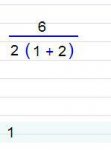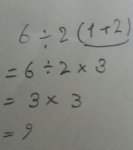hello
well here it is :

I've done it by an app named : algebrator for students
but my calculator shows somthing diffrent ! and so do I !

and also if I write this problem like this:

it shows me a the same answer with my calculator !
whats the problem ? why this happens ?
well here it is :
I've done it by an app named : algebrator for students
but my calculator shows somthing diffrent ! and so do I !
and also if I write this problem like this:
it shows me a the same answer with my calculator !
whats the problem ? why this happens ?
is it about rules of rational numbers ??
plz help me . thank you all
plz help me . thank you all




